TV Station KHB
49 días de vida y muerte
DC801404![]()
津波を撮ったカメラマン [KHB]
![]()
![]()
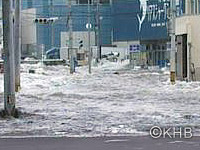
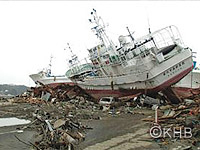
|Length : 24min. |Year : 2014 |
El 11 de marzo del 2011, el Gran Terremoto de Japón Oriental, de magnitud 9.0,
niveló el noreste de Japón. La ciudad de Kesennuma, de la Prefectura de Miyagi, fue destrozada. El subsecuente tsunami, y los incendios que resultaron de escapes de combustible, tuvieron como consecuencia la muerte o desaparición de hasta 1.500 personas.
Kenichi Chiba, un camarógrafo de la Higashi Nippon Broadcasting, y oriundo de Kesennuma, capturó increíbles imágenes del devastador tsunami a medida que iba envolviendo por completo su ciudad. Sus imágenes no demoraron en convertirse en noticia alrededor del mundo.
A pesar de que la familia de Chiba sobrevivió el desastre, el tsunami arrasó con su casa, sin dejar rastro de ella. Como un camarógrafo sin hogar, Chiba es un testigo de la lucha de la gente de su ciudad por reconstruir sus vidas quebrantadas.
Este documental es un diálogo con Chiba, mientras él filma los 49 días subsiguientes al desastroso terremoto. Aquí encontrarán la emocionante historia de la lucha de Chiba con la pérdida – tanto en lo personal, como en las pérdidas que rompen el corazón de sus conciudadanos.
Testimony of 100 Tsunami Survivors Evacuation Saves Lives
DC372423![]()
100人の証言 命をつなぐ津波避難 [KHB]
![]()
![]()
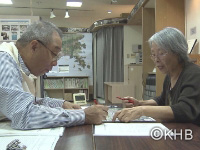
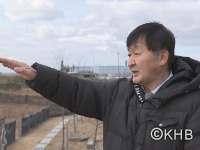

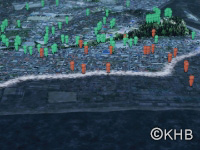
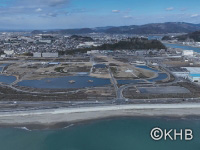
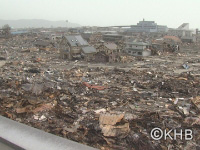
|Length : 25min |Year : 2024 |
On March 11, 2011 the Great East Japan Earthquake triggered a massive tsunami that devastated Ishinomaki City in Miyagi Prefecture and killed nearly 4,000 residents, the most of any municipality impacted by the quake.
To understand why so many residents failed to escape, and to pass on lessons of tsunami evacuation to future generations, a legacy group conducted a survey of 100 survivors. The interviews shed light on evacuation behavior that day and allowed researchers to recreate survivors’ actions using computer graphics. The results reveal a pattern of dangerous evacuation decisions, but also heroic actions that saved many lives.
,Thirteen years since the great earthquake and tsunami, it is hoped that a better understanding of evacuation behavior, and the voices of survivors, will help save lives in the future.
Landslides and Deforestation -Moving Towards Future Forest Development
DC372220![]()
テレメンタリー2021 土砂災害と森林伐採-民家に迫る危険 [KHB]
![]()
![]()
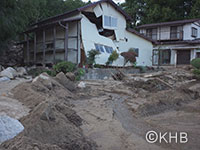
|Length : 25min |Year : 2022 |
Every year in Japan, typhoons and low-pressure fronts usher in heavy rains.
In October 2019, Typhoon Hagibis caused extensive damage in eastern Japan. In Marumori Town of Miyagi Prefecture alone, landslides occurred in 173 locations, leaving 12 people dead or missing. Why did the landslides occur one after another? An on-site investigation revealed that in some cases, the landslides were caused by "clearcutting," the complete removal of trees from large areas of forest. While the government is promoting a policy of subsidies to boost lumber productivity, experts on forest management and law have sounded the alarm, saying that large-scale logging is taking place on steep slopes and areas close to homes, triggering disasters.
Children’s Message of the Devastating Earthquake to the Next Millennium
DC371514![]()
女川いのちを守る会~1000年後へのメッセージ~ [KHB]
![]()
![]()
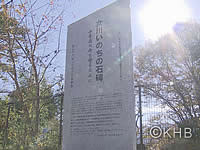
|Length : 24min |Year : 2015 |
When the Great East Japan Earthquake struck, waves as high as 14.8 meters ravaged Onagawa Town. 827 lives, nearly 10 percent of the population, were lost and 70 percent of the town buildings were destroyed.
The seventh graders of Onagawa Middle School decided to do something to pass on the lessons of this tragedy to future generations. With the motto “to protect the lives of 1000 years from now,” they continue their work and hope to reach their goal of erecting 21 stone monuments by the time they are 20 years old.
Daring Attepmt of Oystermen to Overcome Earthquake Adversity
DC371412![]()
三陸カキ 真の復興に挑む [KHB]
![]()
![]()
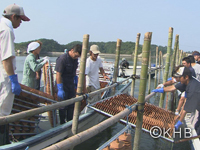
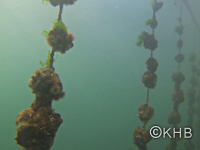
|Length : 24min. |Year : 2014 |
The oystermen on the Sanriku Coast of Japan suffered great losses in the tsunami wrought by the 2011 Tohoku Earthquake. A good 90% of the oyster cultivation facilities in Miyagi Prefecture, nearly 12,000 of them, were lost. There are men here who are attempting to bounce back from this adversity through a new venture. They consist of Hiroaki Saito, operator of an online oyster sales company, and 20 oystermen from six coves within the prefecture.
The Sanriku oyster industry has been plagued by problems such as an aging population and a lack of successors. In order to create a life better than that they led before the disaster, they must produce and market greater numbers of oysters in their shell. To that end, they decided to adopt cultivation methods used by oystermen in France, one of the world’s leading oyster producing nations.
This program chronicles the attempts by these oystermen to restore the cultivation of Sanriku oysters.














